Scovill Mfg. Co.
American Optical Company
Waterbury Type Camera Variation 1
(ground glass frame hinges on the bottom)
4 x 5" (ground glass frame hinges on bottom)
4x5a-wcase-small.jpg)
4x5a-camonly-small.jpg)
4x5b-small.jpg)
4x5c-small.jpg)
4x5d-small.jpg)
4x5e-small.jpg)
4x5f-small.jpg)
4 x 5" (ground glass frame
hinges on bottom)
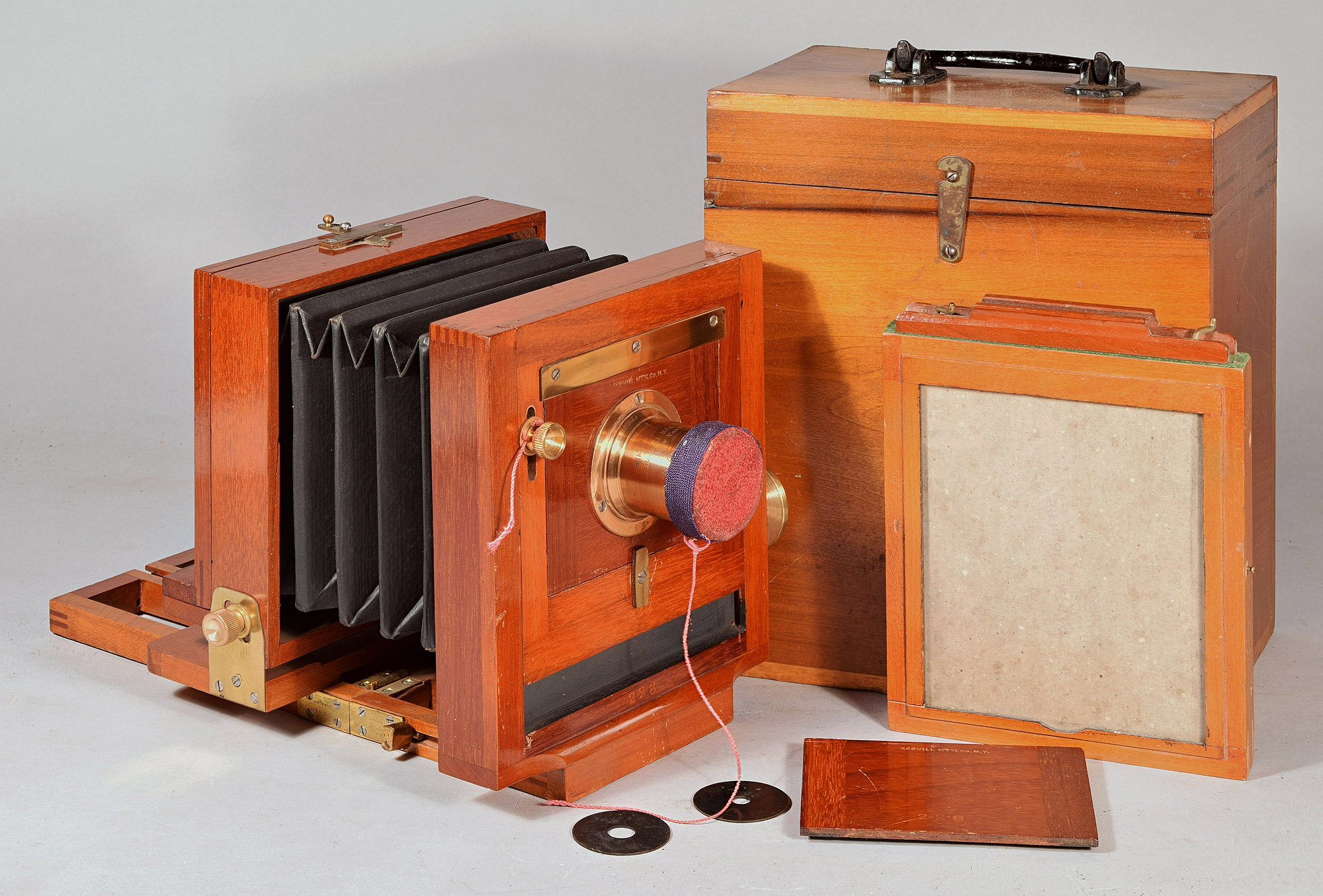
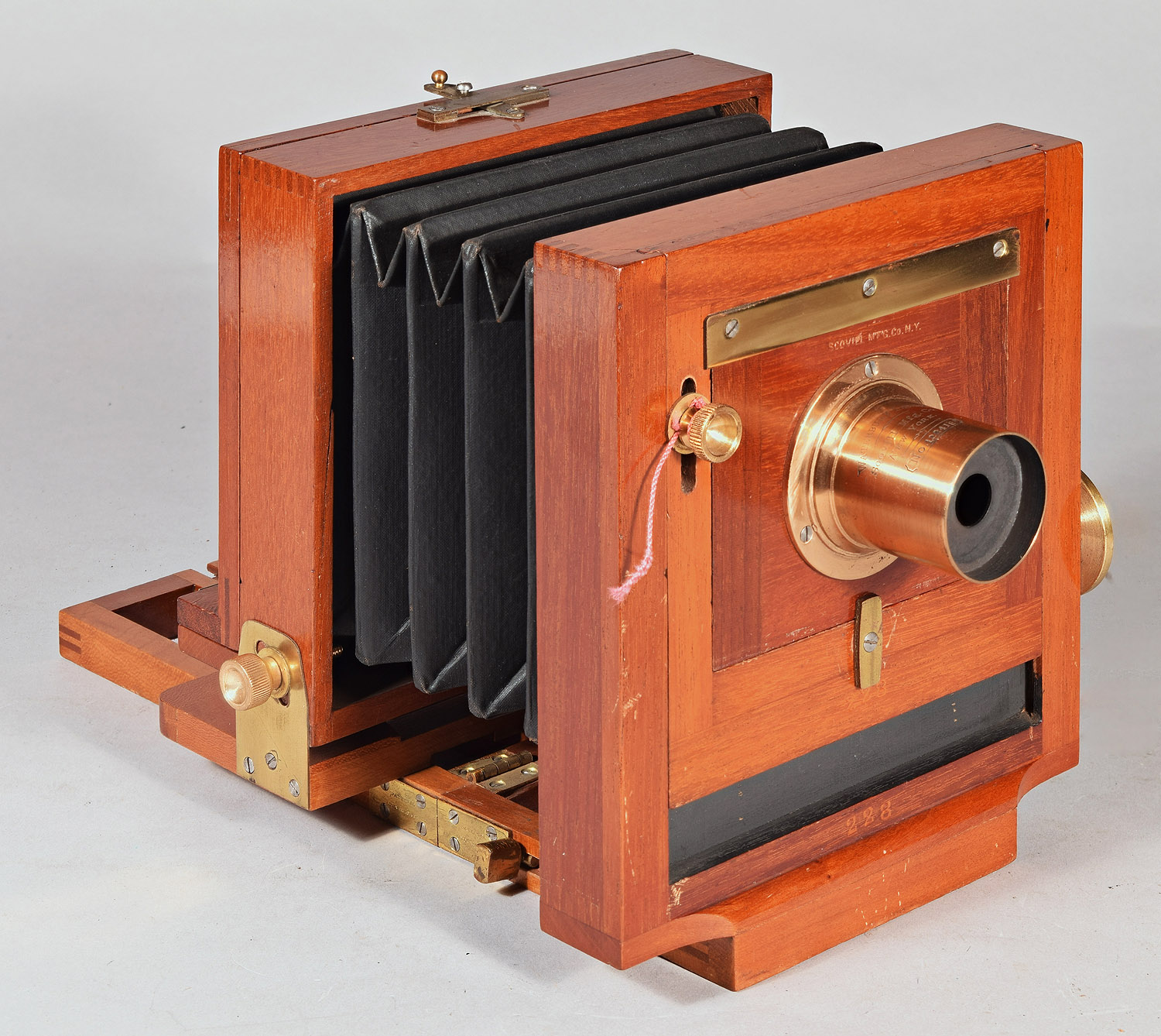
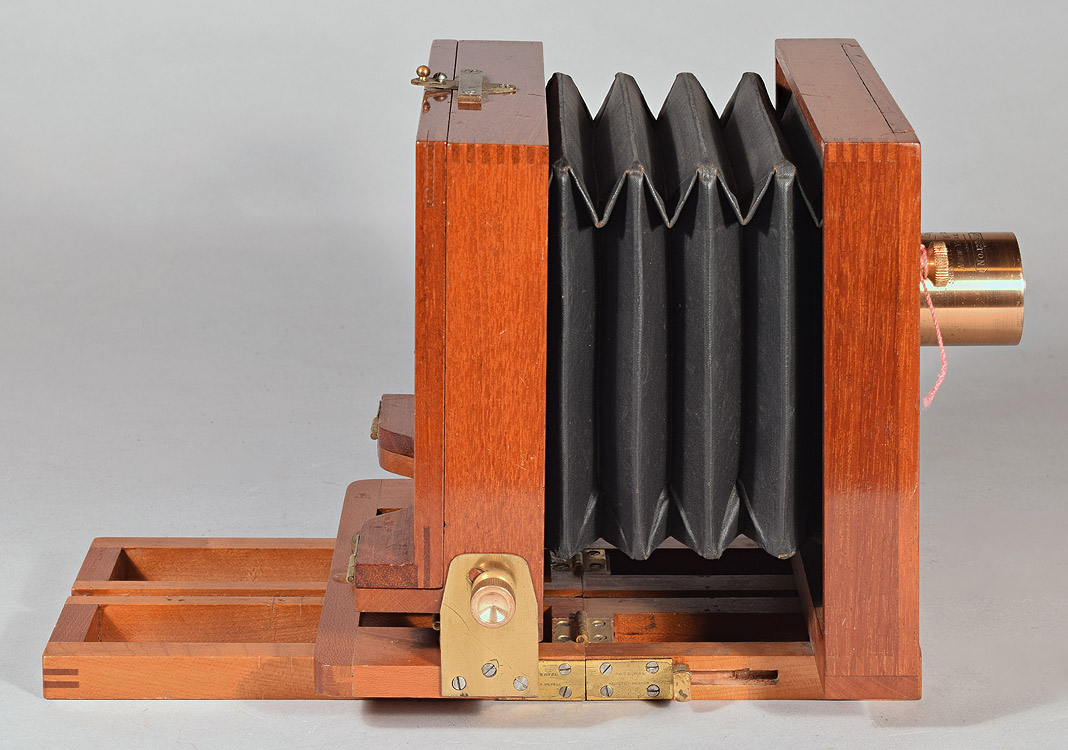
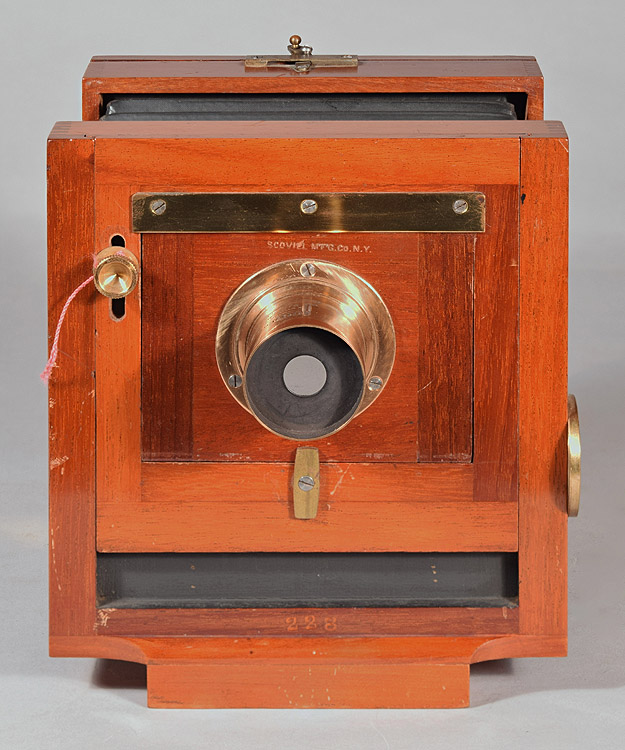
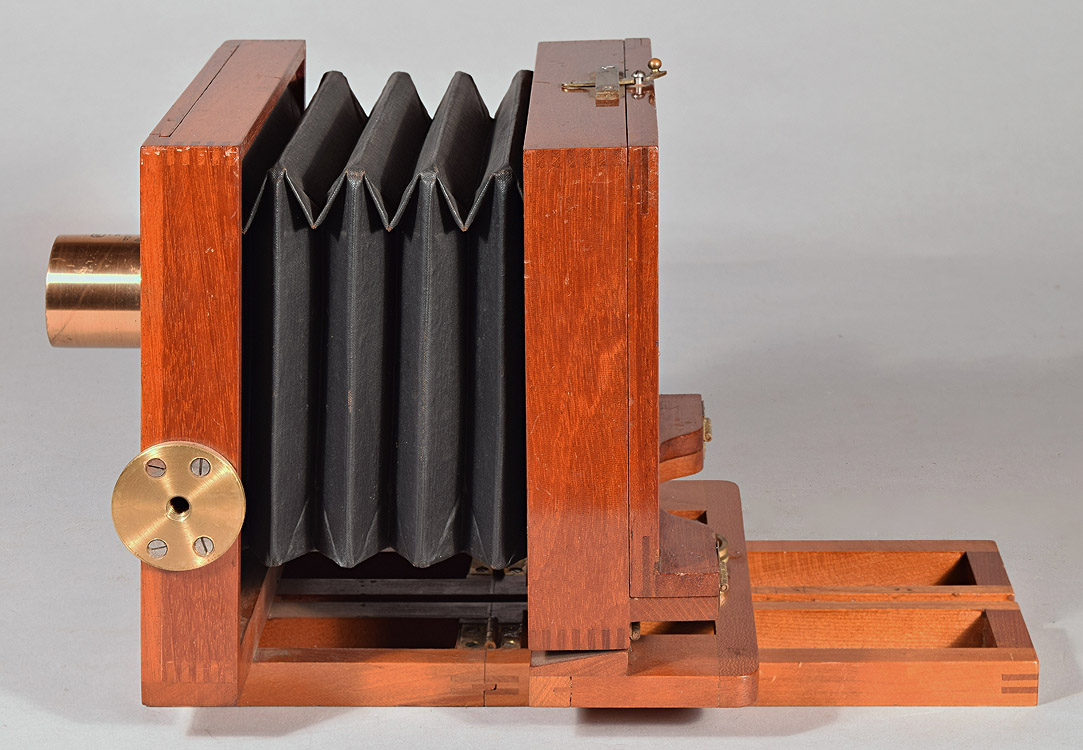
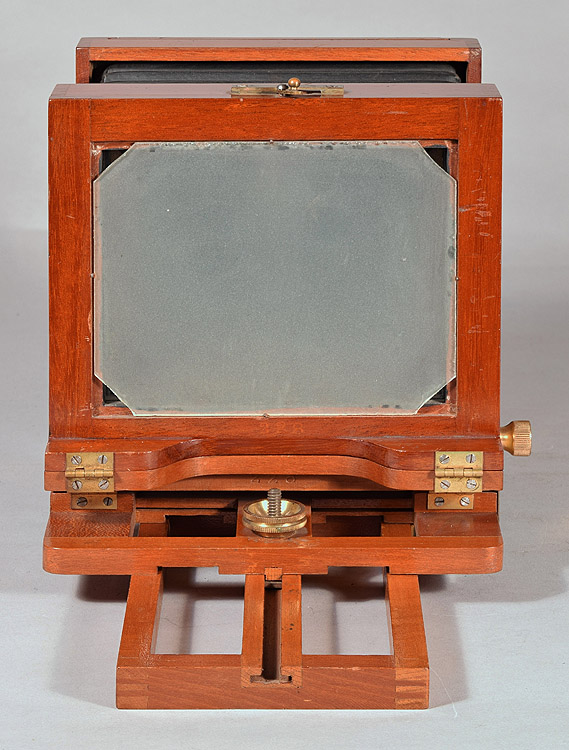
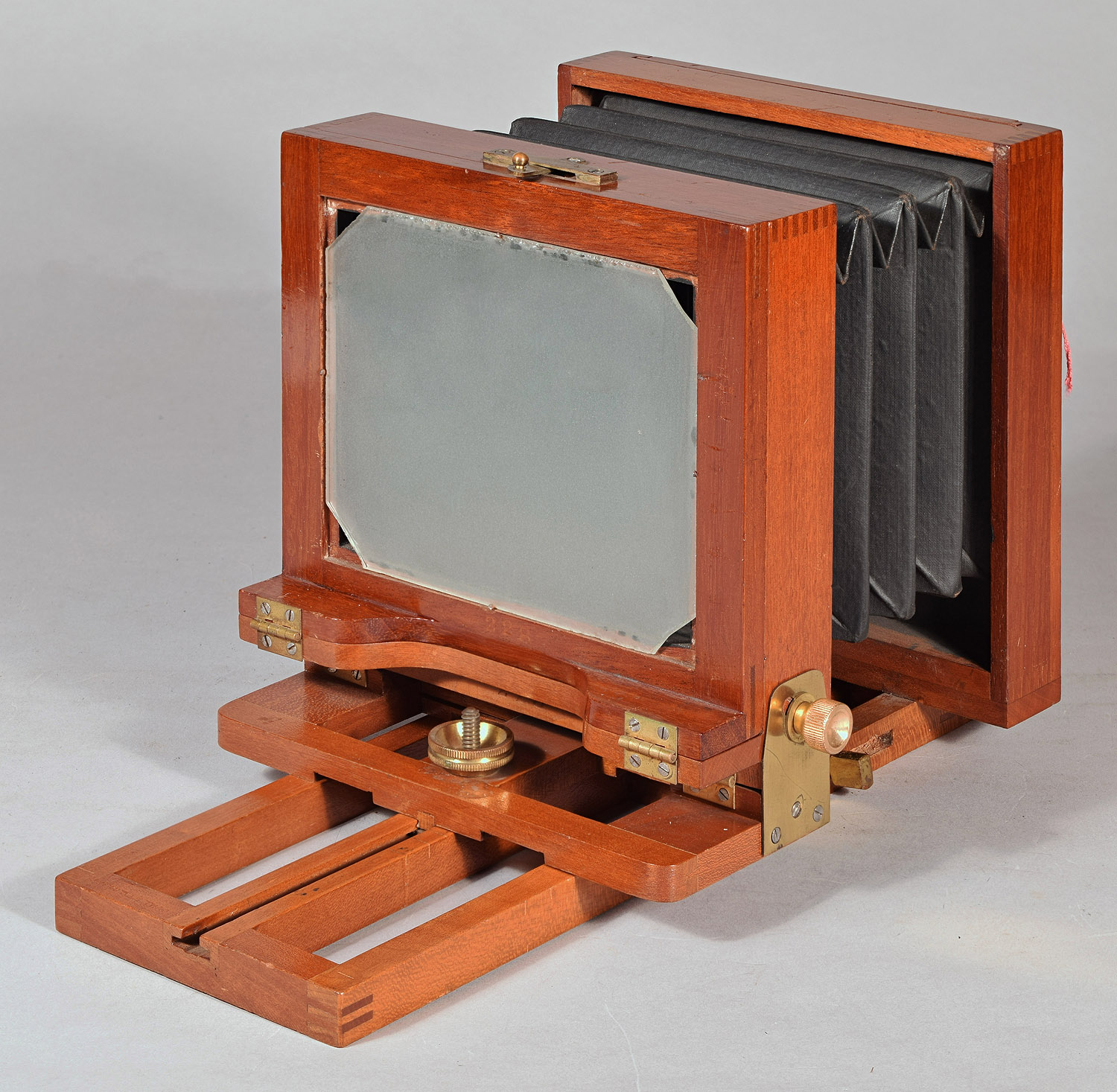
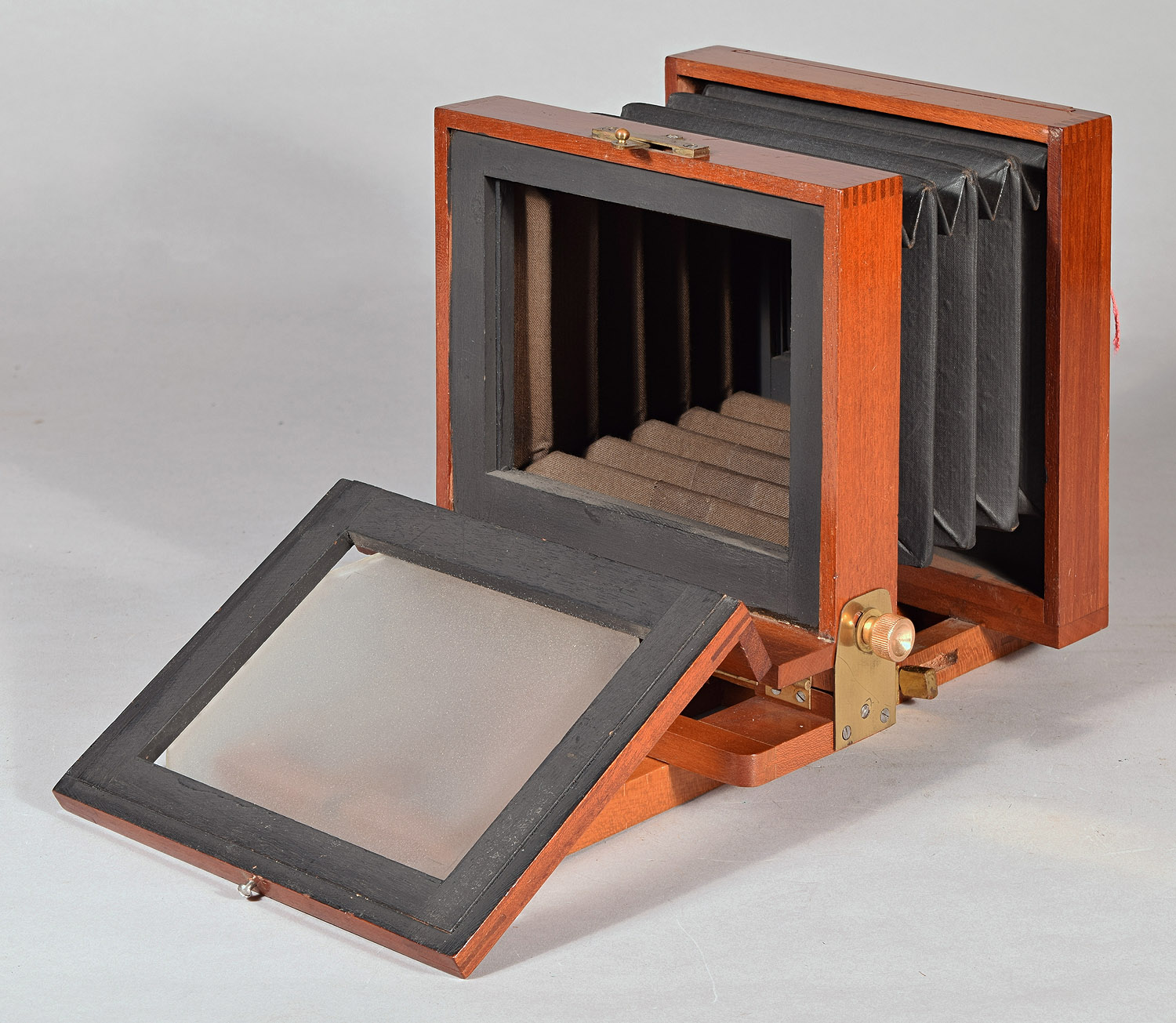
Markings on the Flammang rod and piston device to
make the bed rigid

Stamp at the rear of the base frame

Manufacturer:
American Optical Co. New York, NY
factory
Date Introduced: - ; Years Manufactured: c.
1896
Construction:
Materials:
Sizes Offered:
5x7; 5x8; 6 ½x8 ½,
8x10
Notes:
Tentative identification
of this model as the Leader View Camera was wrong!
When I first saw
this type of camera, not being able to match it to one of the Scovill or
American Optical engravings or descriptions, I called it the American
Optical Waterbury-Type Camera ("Waterbury-Type" for its resemblance
to the
Scovill Waterbury Camera Variation 2).
Then, I
thought that maybe this camera was The Leader View Camera,
advertised, but not described other than being one of
"First quality American Optical's Cameras",
on the "Bargain Page"
only of the American Annual of Photography and
Photographic Times Almanac for 1896-1898.
Finally,
though, I saw a description of The Leader View Camera in the
Internet Archive (Buchanan's
Complete Illustrated Catalogue of Photographic Supplies, W. P.
Buchanan (Philadelphia, PA), 1893, p. 39)
that indicated that the Leader was front focus only and had
nickel-plated hardware.
I have therefore unfortunately had to reverse
myself, and call this camera, once again, the American Optical
Waterbury-Type Camera. The
Leader
View Camera has a separate listing.
Description: The American Optical Waterbury-Type Camera appears to be an American Optical version of the popular and common Scovill Waterbury View. As is usual, the American Optical version is a superior quality camera. Specifically, it has 1) better quality mahogany than the Scovill Waterbury, 2) dark-colored French polish lacquer finish (on the body; the base is varnished), rather than the light-colored, single-coat varnish used on the Waterbury, 3) sometimes, but not always, has two patent rod and cylinder devices which are also more tightly made to make the bed rigid, rather than the one rather loose type found on the Scovill Waterbury, 4) larger bellows and body than the Scovill Waterbury for the same sized ground glass, 5) a different swing mechanism. Below are comparison photos, the American Optical on the left and the Scovill Waterbury on the right.
Variations: I have divided the American Optical Waterbury-Type Cameras into two variations; their only difference is in the location and type of hinges that fasten the ground glass frame to the rear standard:
American Optical Waterbury-Type Camera Variation 1: Two butterfly-type hinges are used at the bottom of the ground glass frame, just like the Scovill Waterbury View has.
American Optical Waterbury-Type Camera Variation 2: Two brass strip hinges are found on the sides of the ground glass frame, held only the rear standard by one screw each side that is not completely tightened - the screw itself acts as the axis or pivot point.
References:
5 x 7" (ground glass frame hinges on bottom)
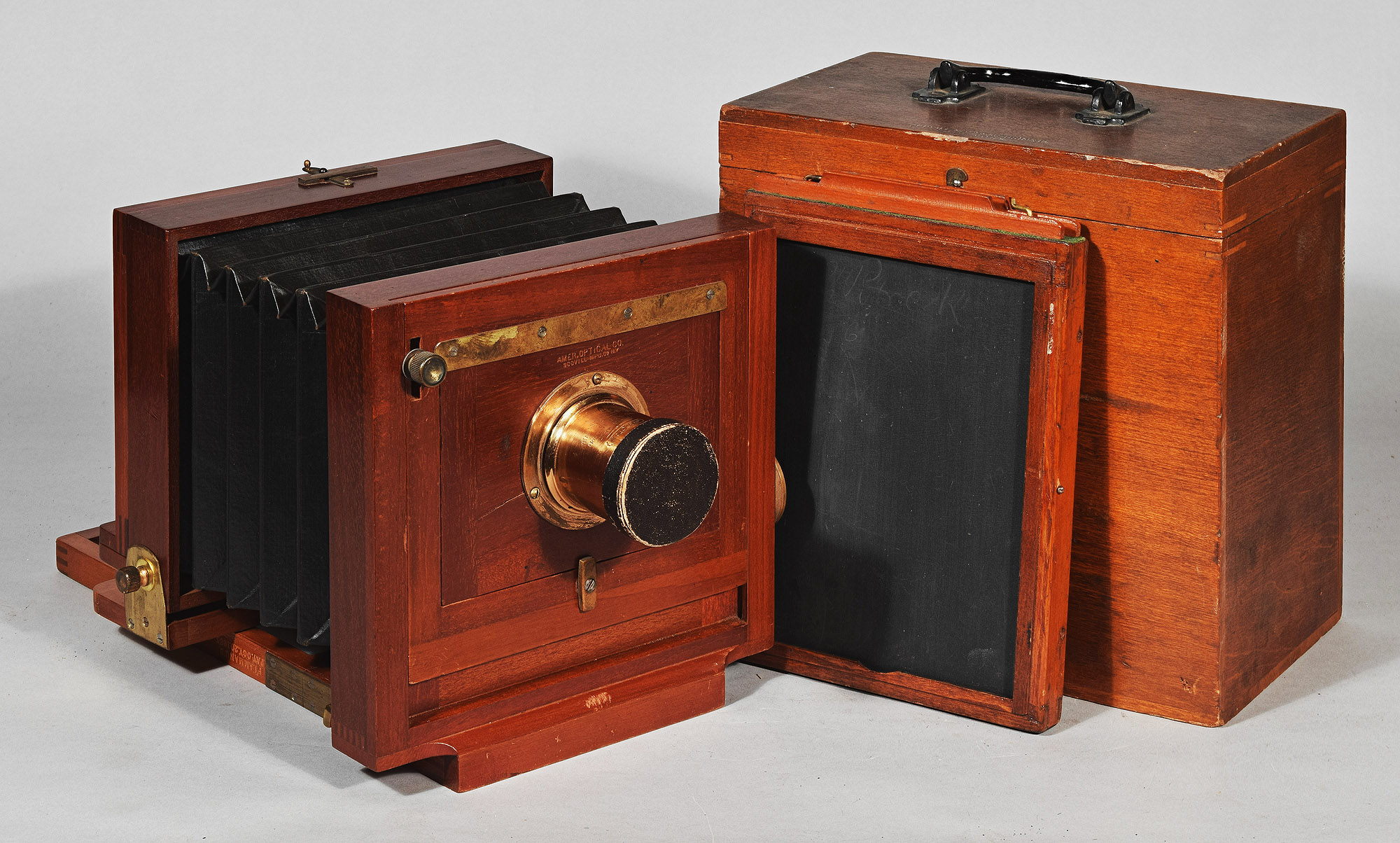
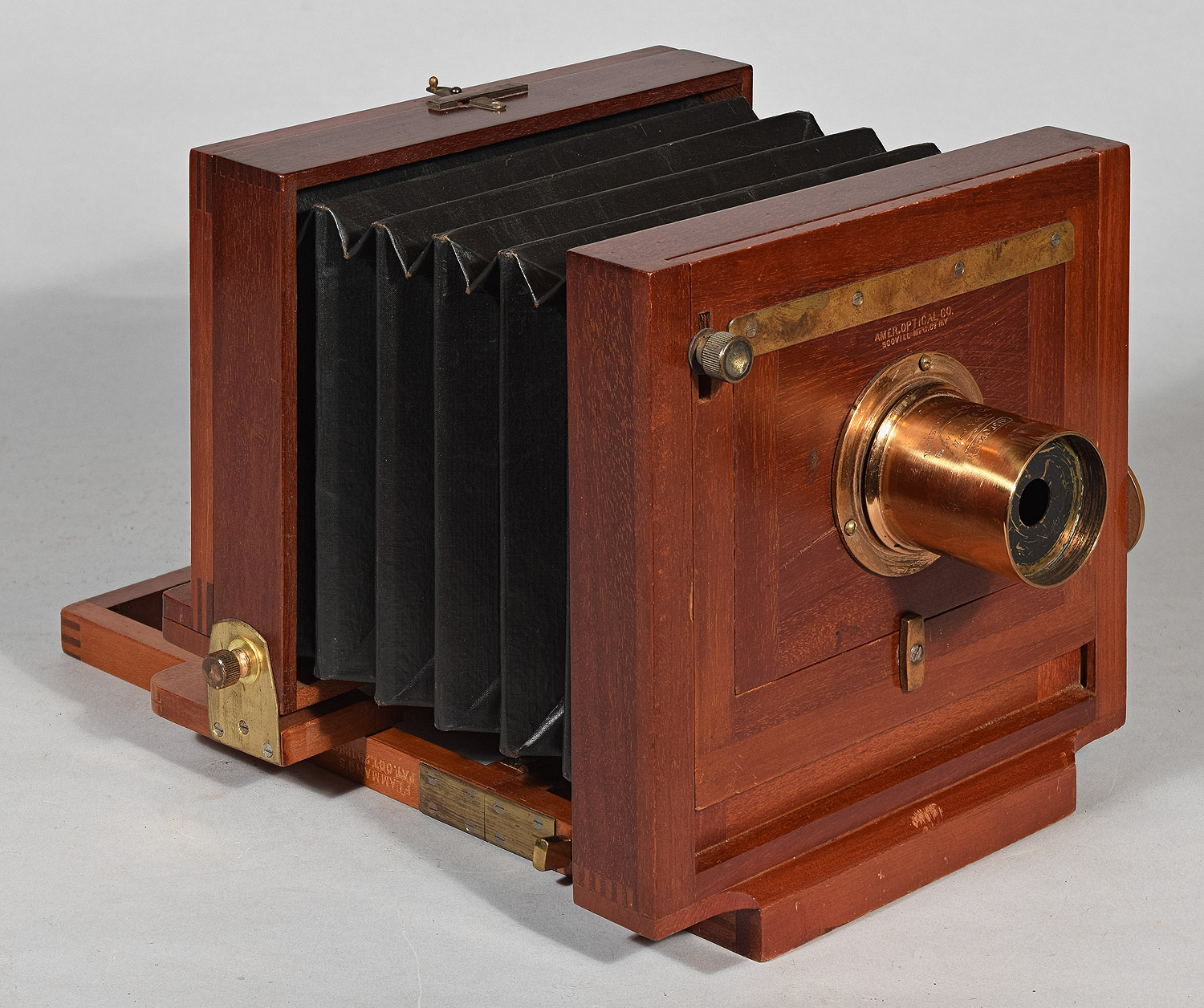
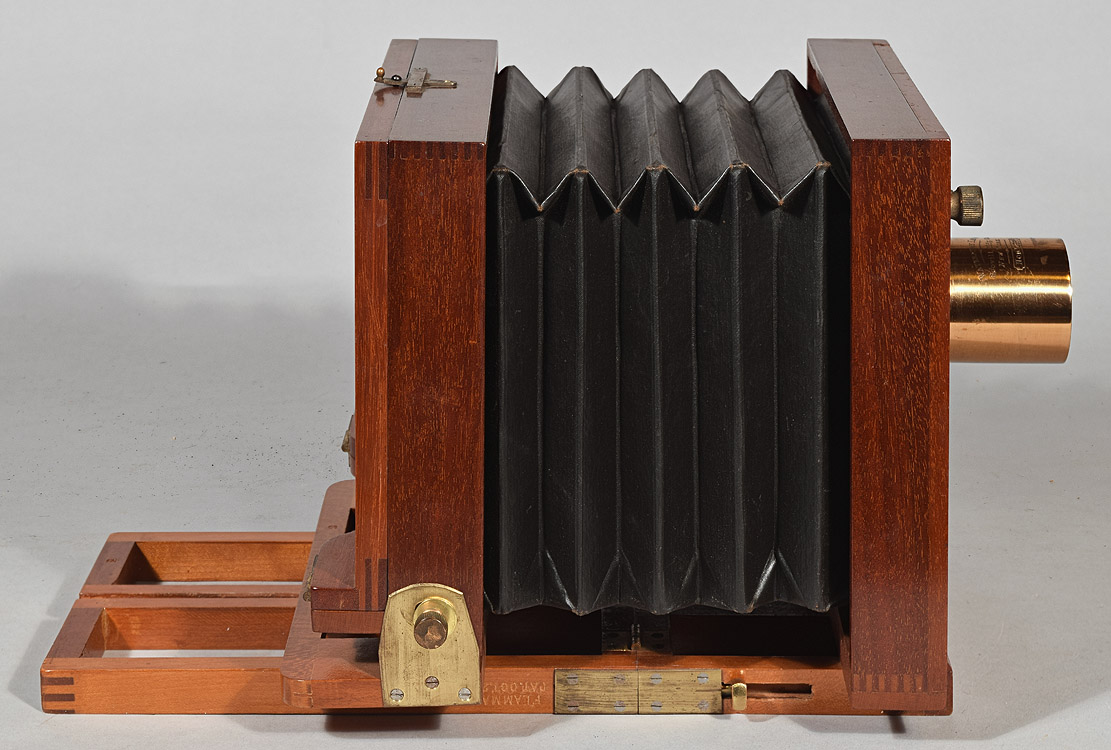
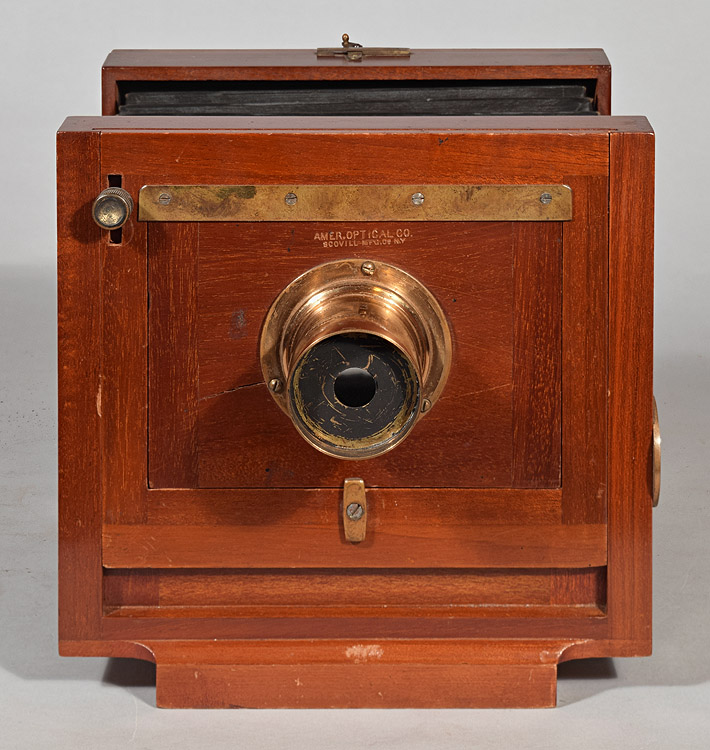
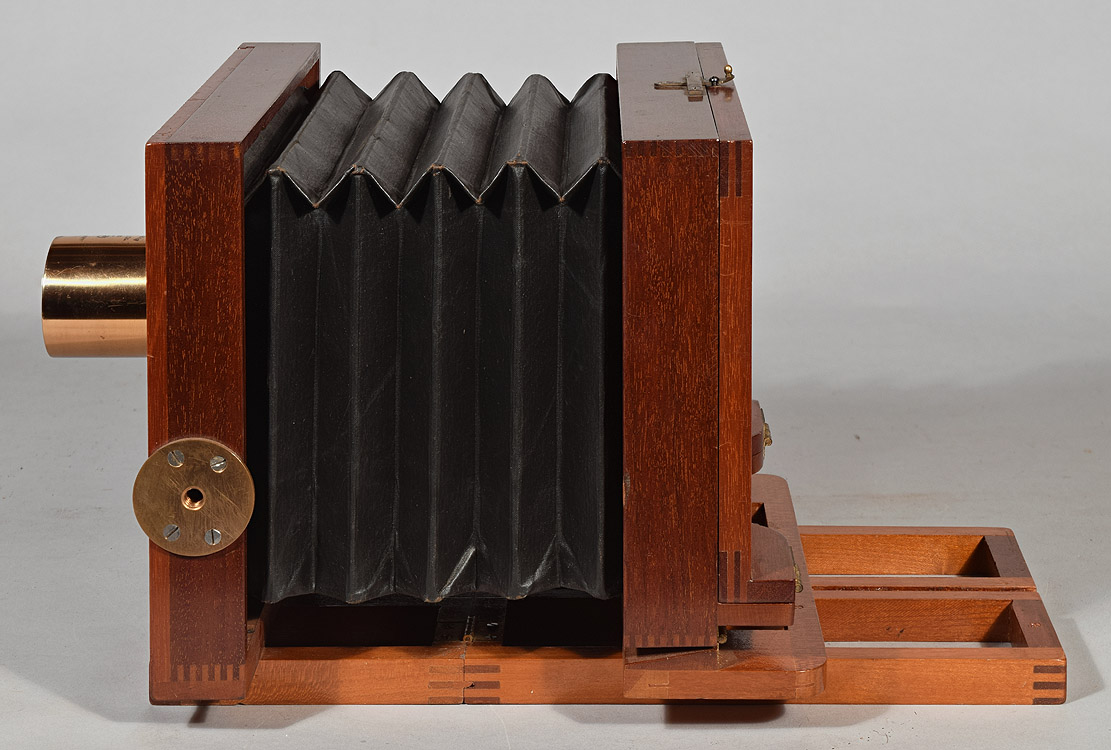
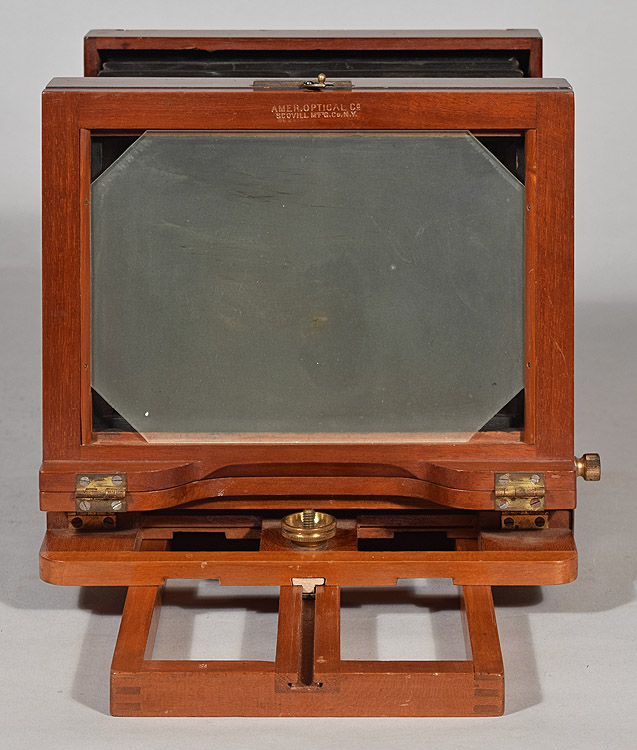
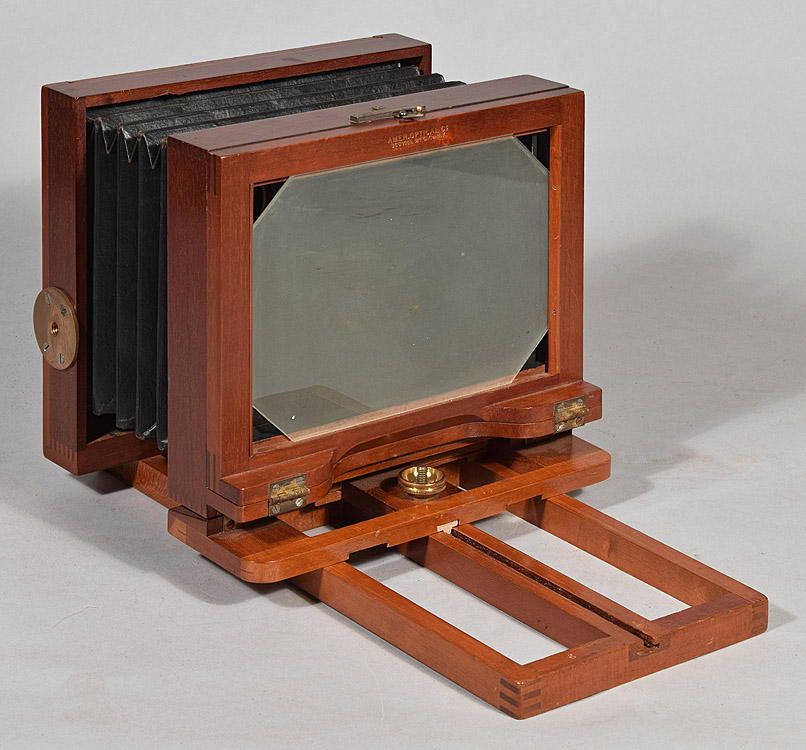
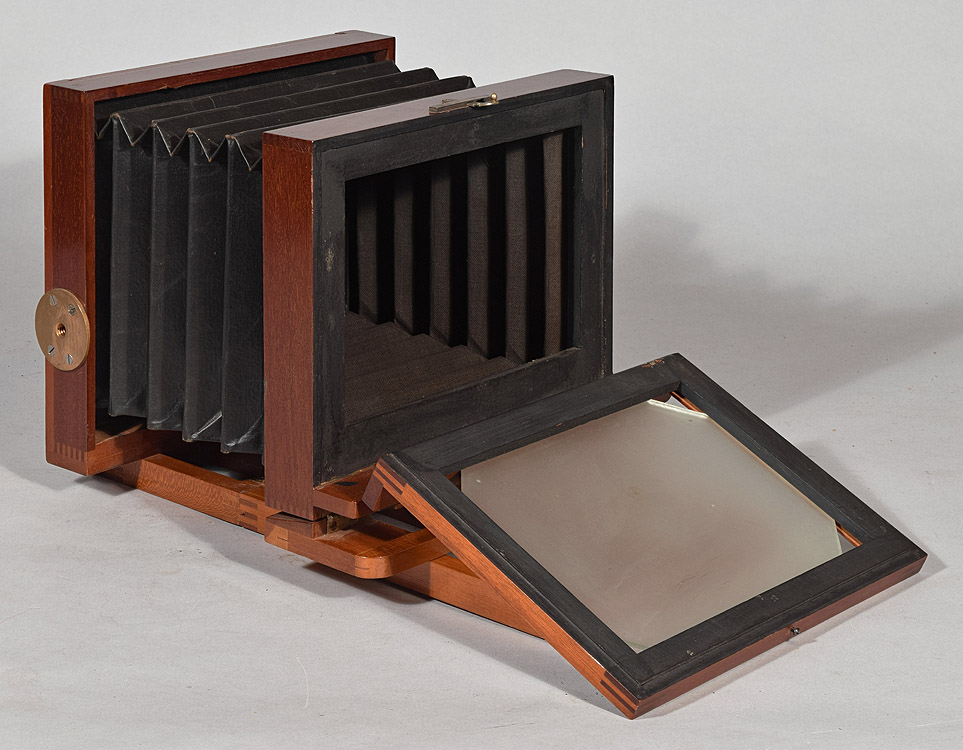
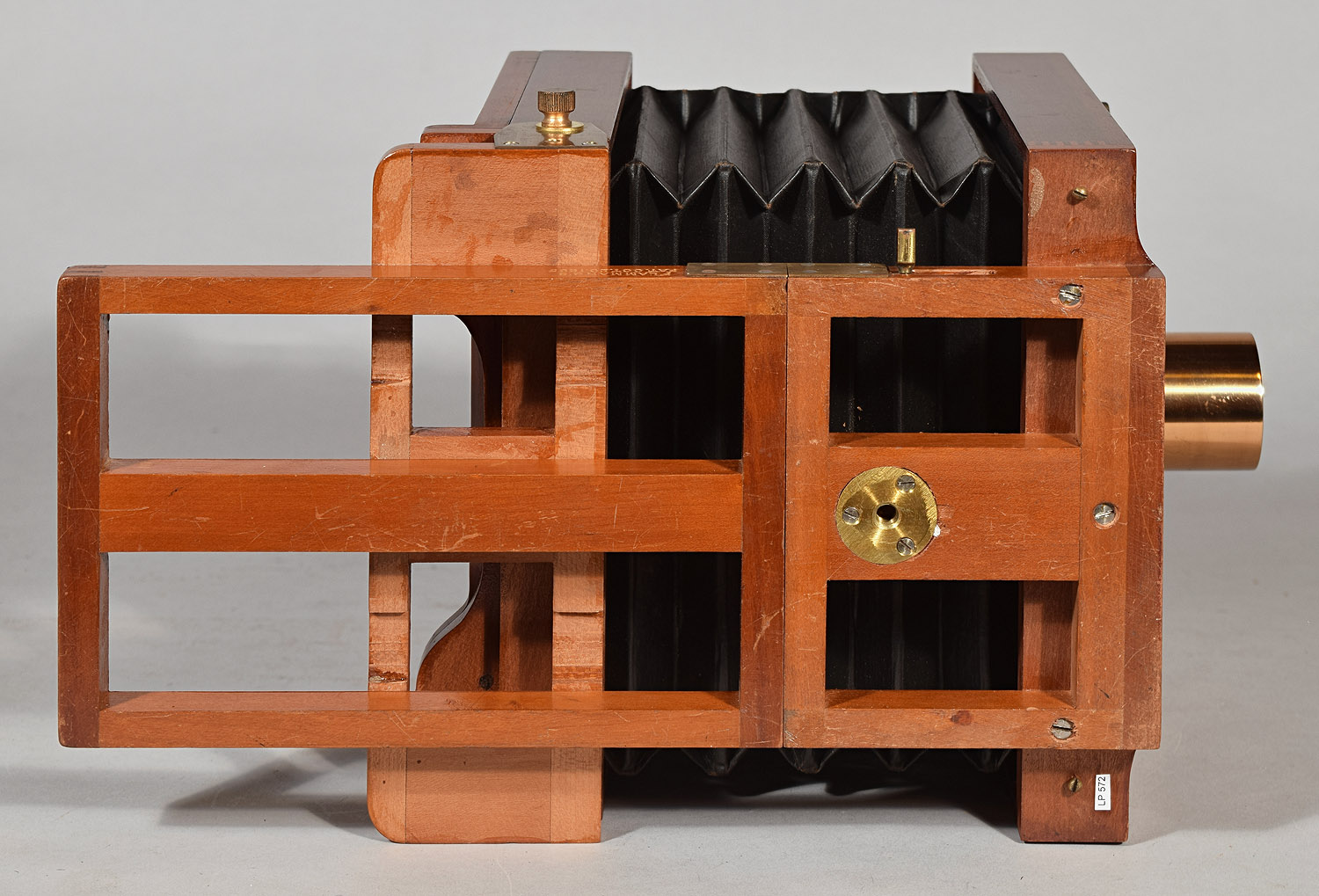
Front Stamp - on lens board
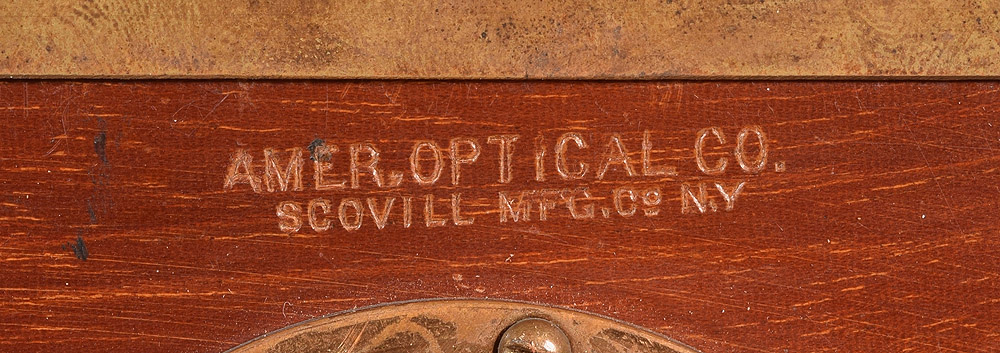
Rear Stamp - on ground glass
frame
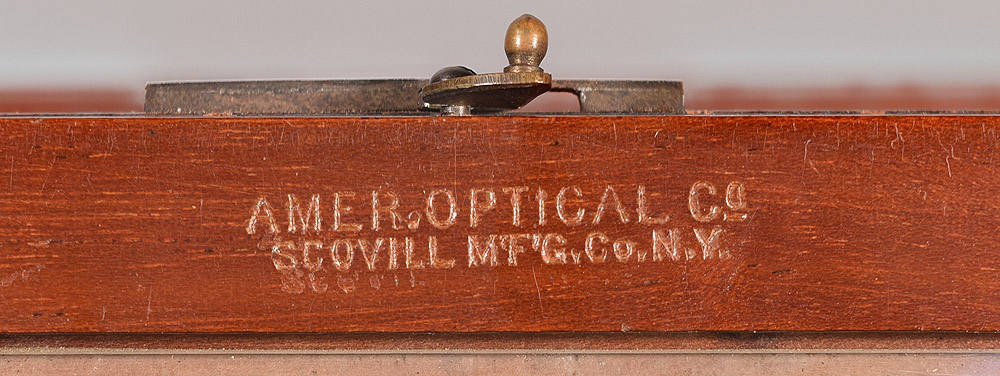
Stamp for rod & tube
device for keeping the bed rigid. This patent should not be
confused with the one on which the
Flammang Patent Revolving Back Camera,
is based - a different patent having its own patent number.
Note that all the screw slots are aligned
horizontally. This is achieved by trying screws at random until
each one lines up, a lengthy process that illustrates the care with
which this model is finished and assembled.

Stamp on the top of the wooden
case

Stamp on the plate holder: "Pat'd
Jan. 24, 1888" (W.H. Fuller/Scovill Mfg. Co. patent for a plate holder)
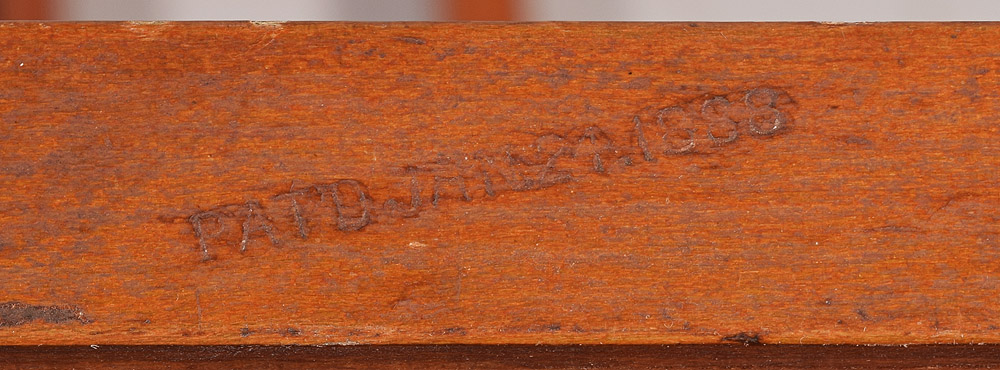
Another 5 x 7" (ground glass frame hinges on
bottom)
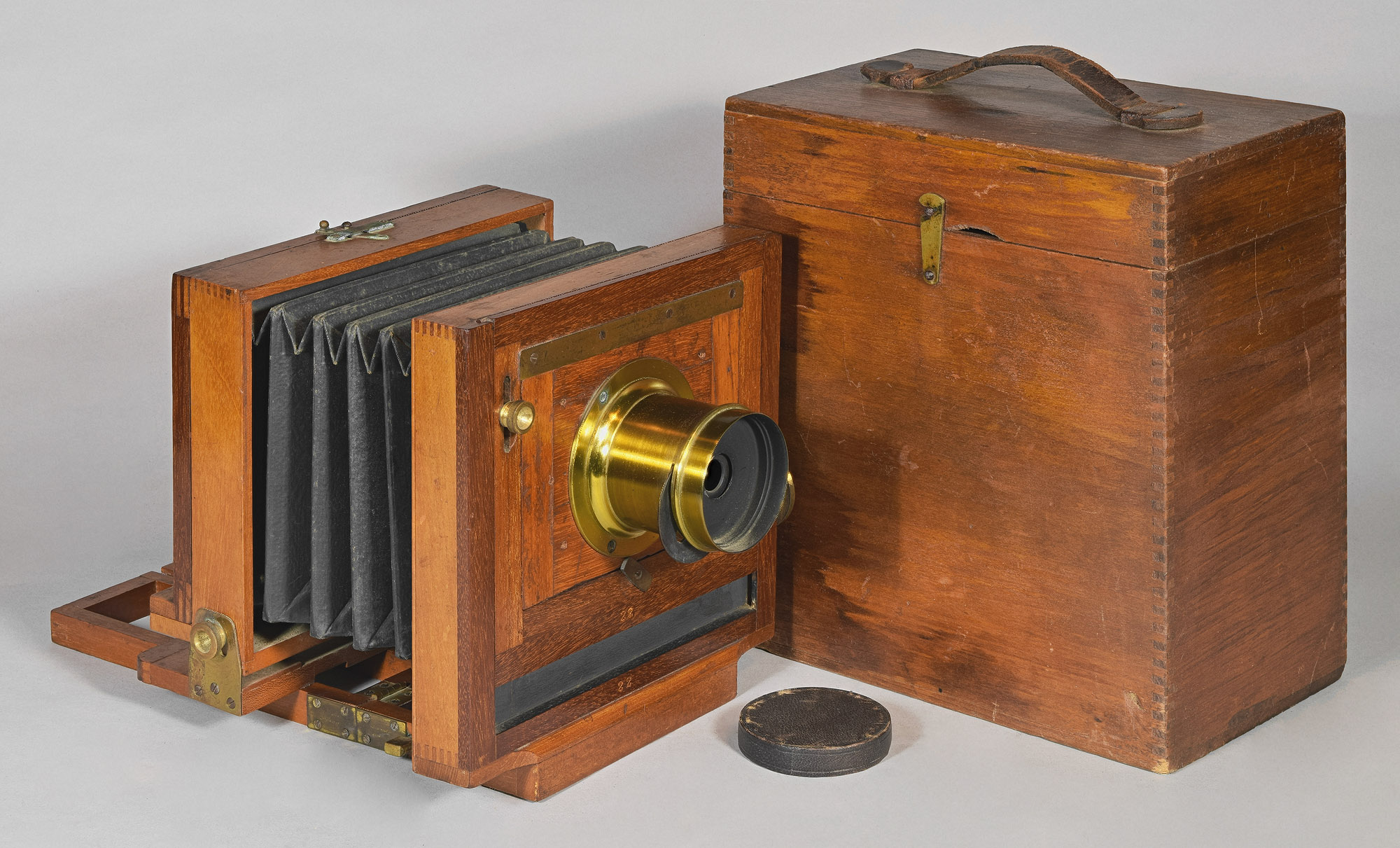
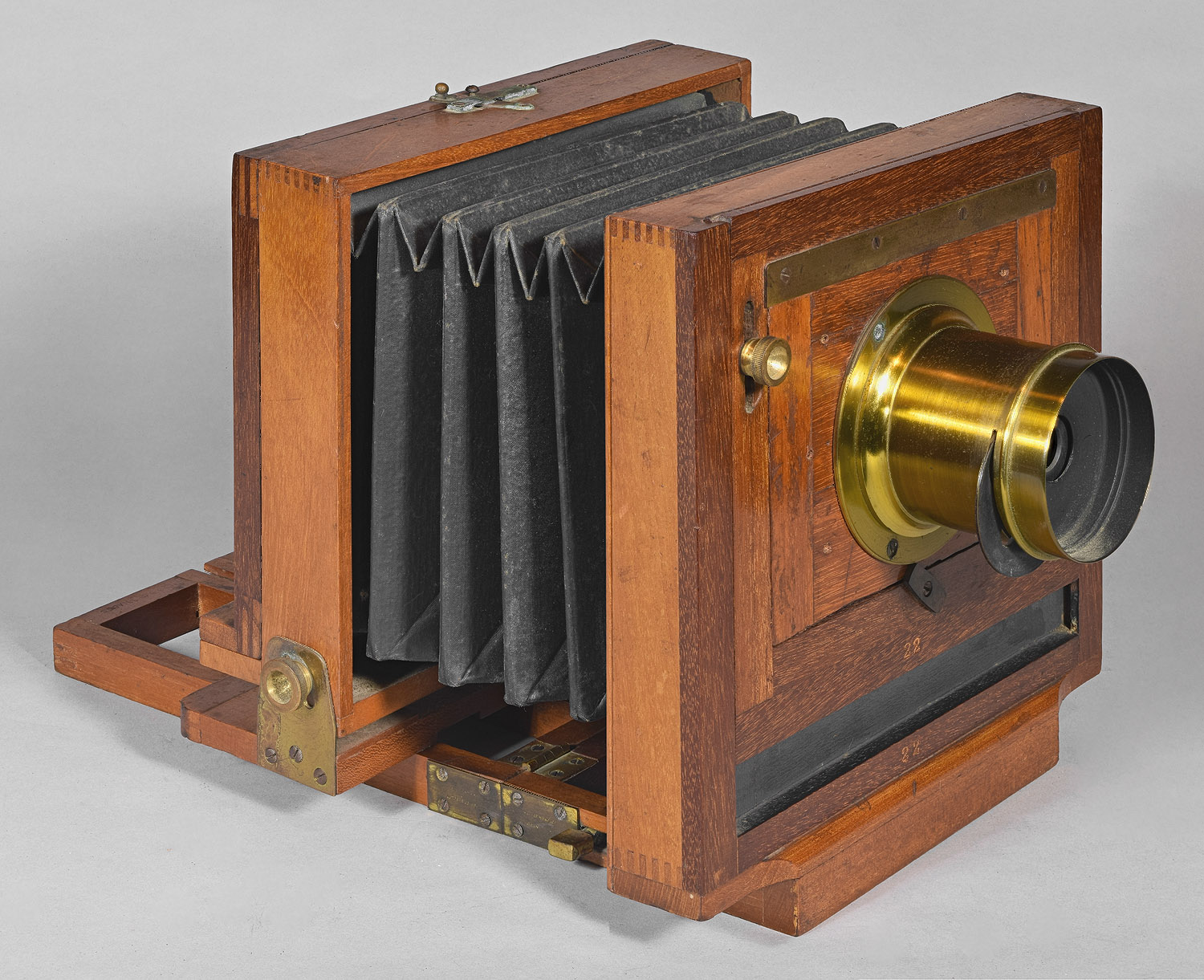
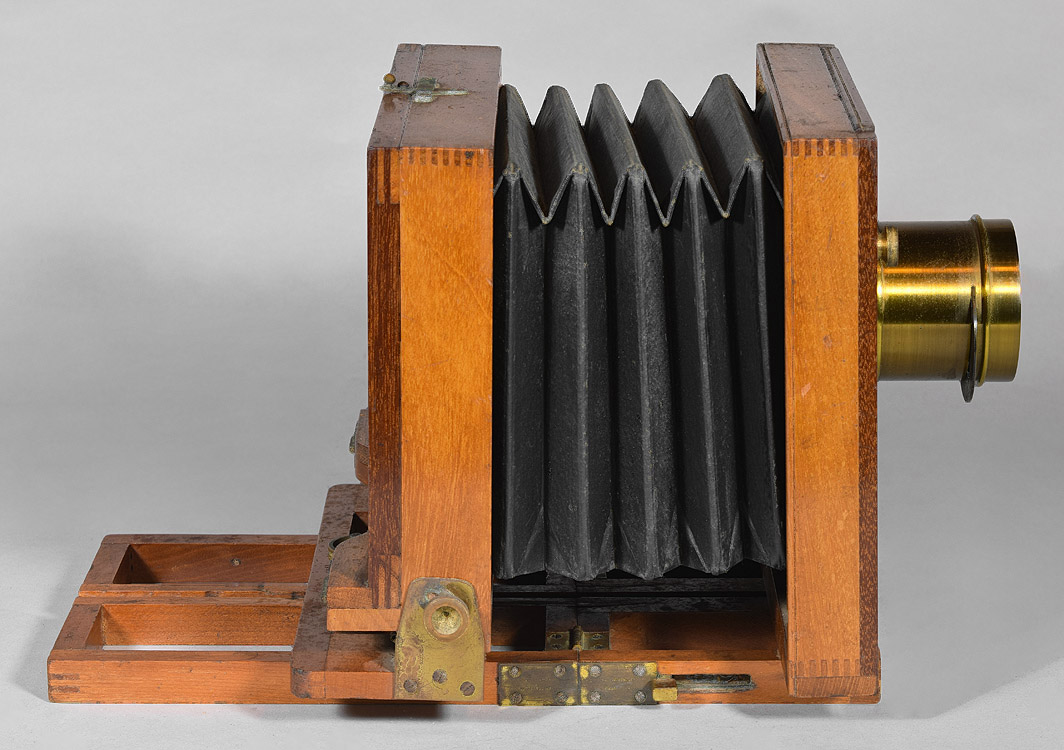

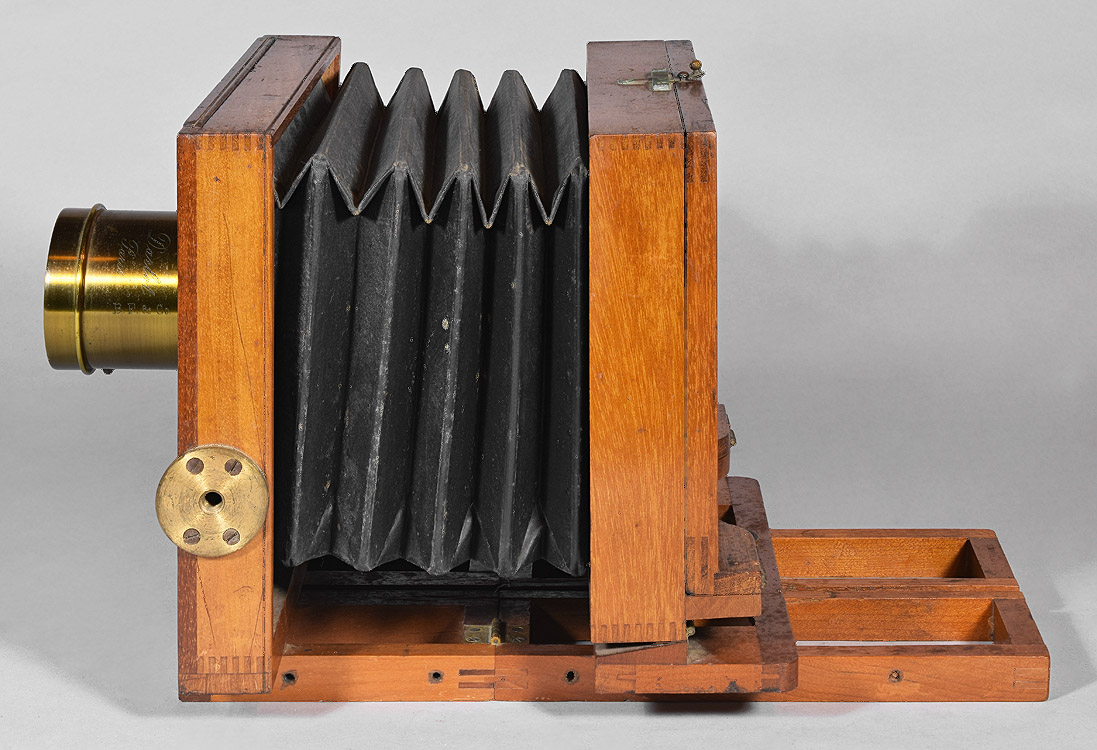
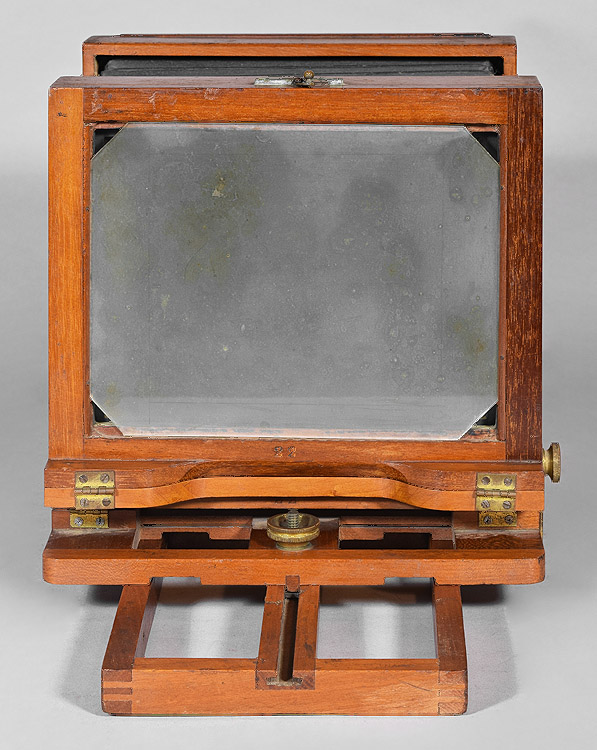
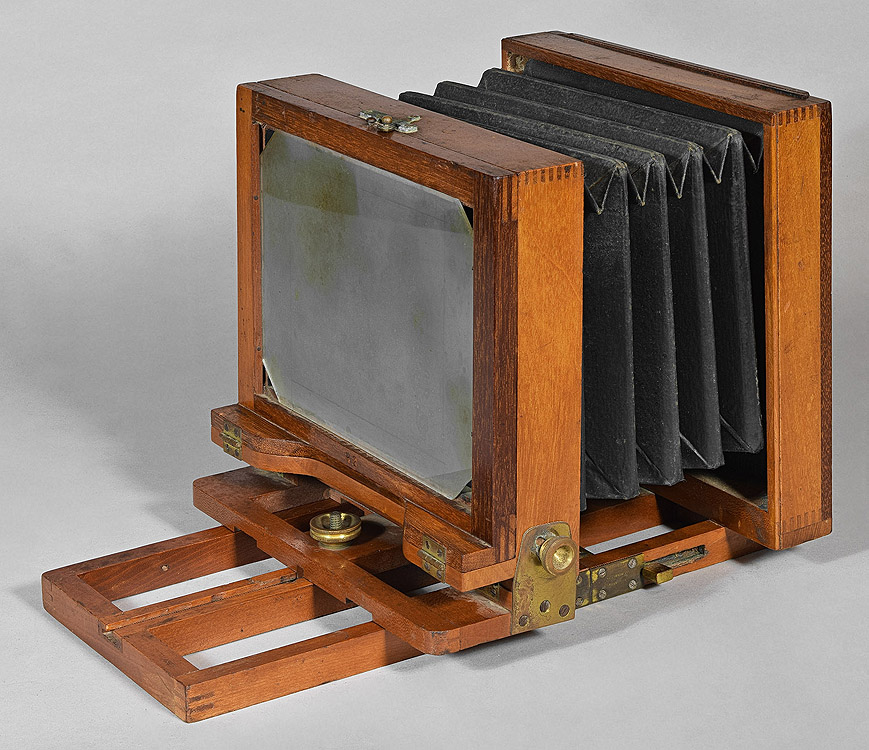

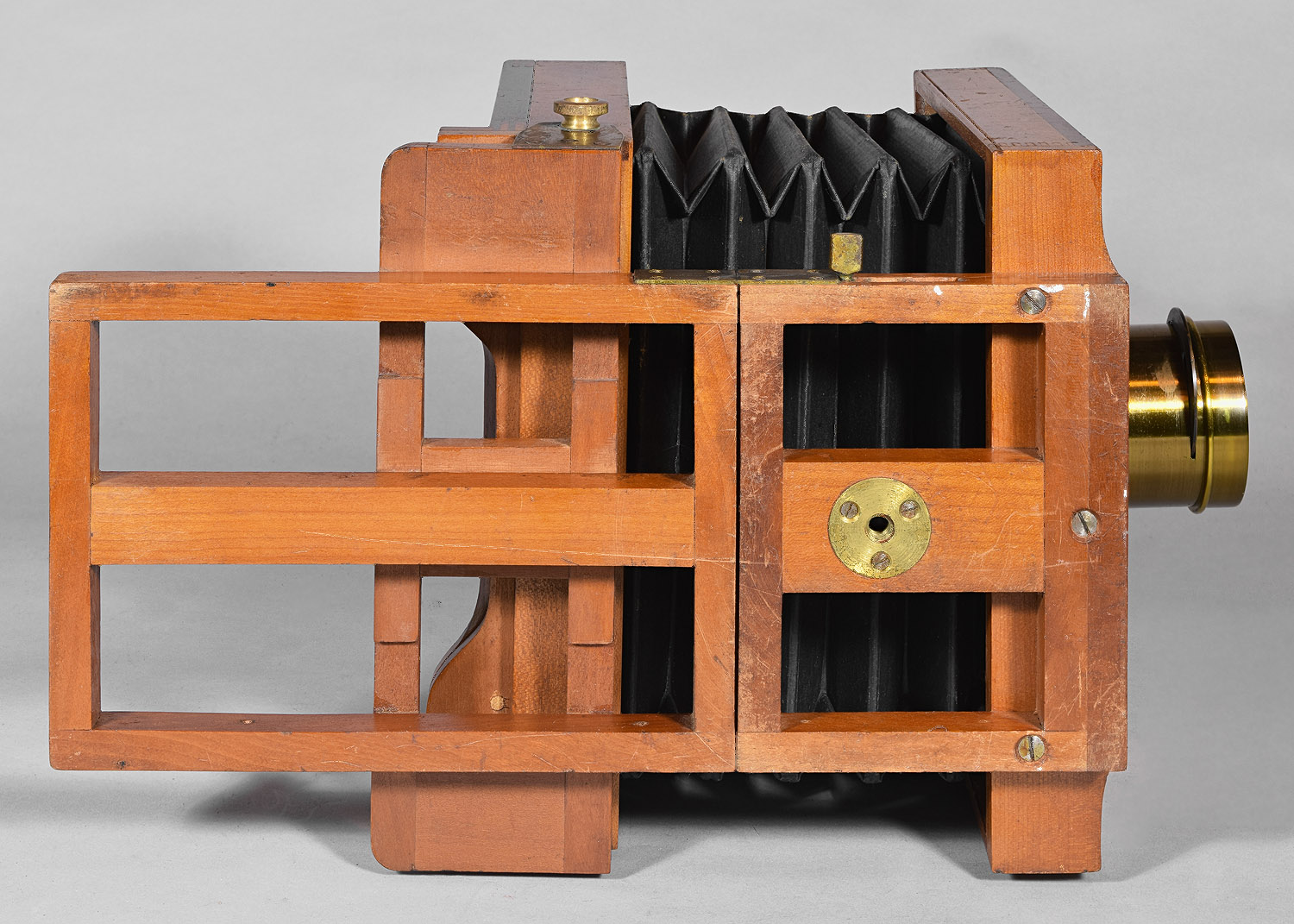
Stamp on lens board: "Scovill
Mfg. Co. N.Y."

Stamps on front standard -
assembly number 22
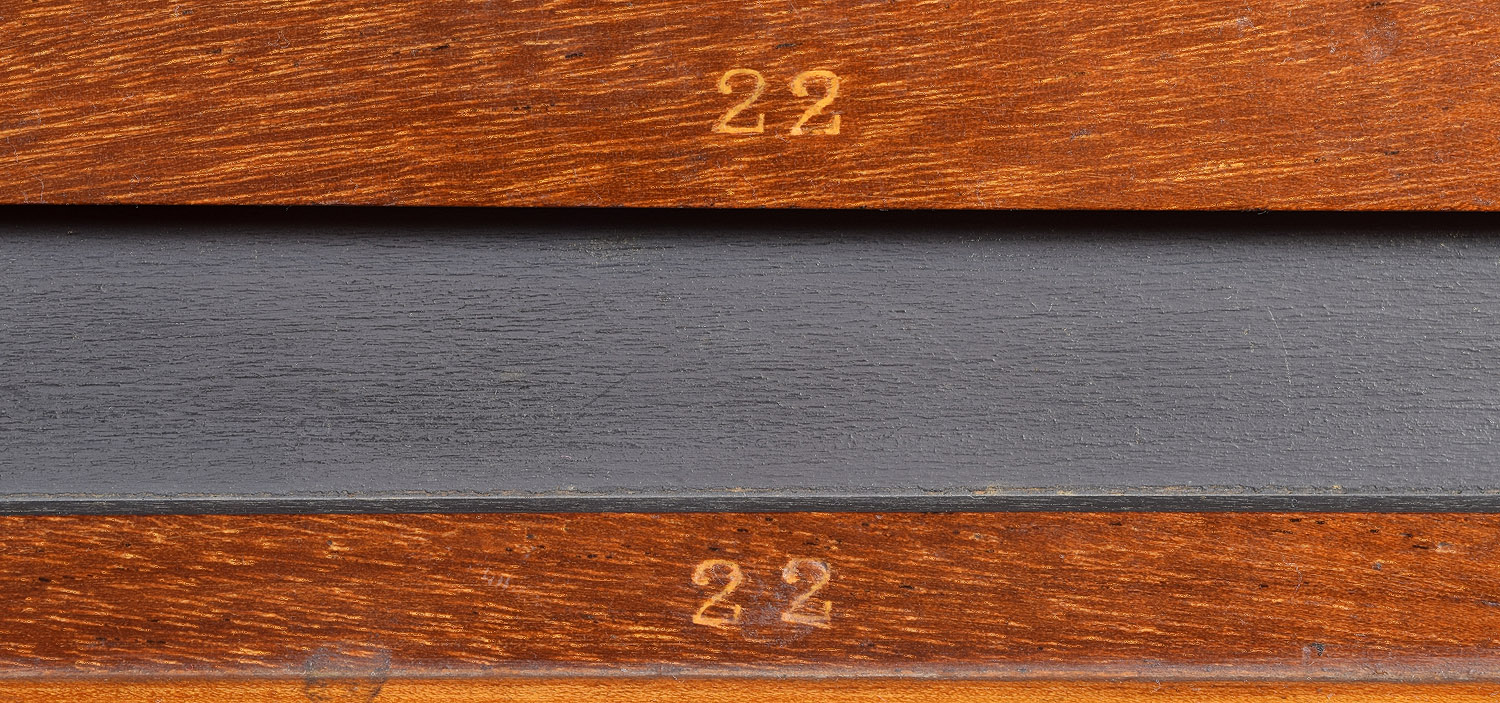
Stamps on the rod & tube
device for keeping the bed rigid: "Patented October 20, 1885".
This patent should not be confused with the one on which the
Flammang Patent Revolving Back Camera,
is based - a different patent having its own patent number.
Note that apparently the parts were made individually
and identically - less expensive than making them in matching pairs, and
stamped before being installed as a pair; therefore, one had to be
installed upside-down. Above, one of the 4x5" examples has a pair
where the stamps are both right-side-up.

Stamp on rear of platform/base:
"Scovill Mfg. Co. N.Y." On some examples of this model (such
as the 5x8" camera below), the stamp in this location reads: "Amer.
Optical Co. Scovill Mfg. Co. N.Y." rather than just "Scovill Mfg.
Co. N.Y.".

5 x 8" (ground glass frame
hinges at the bottom)

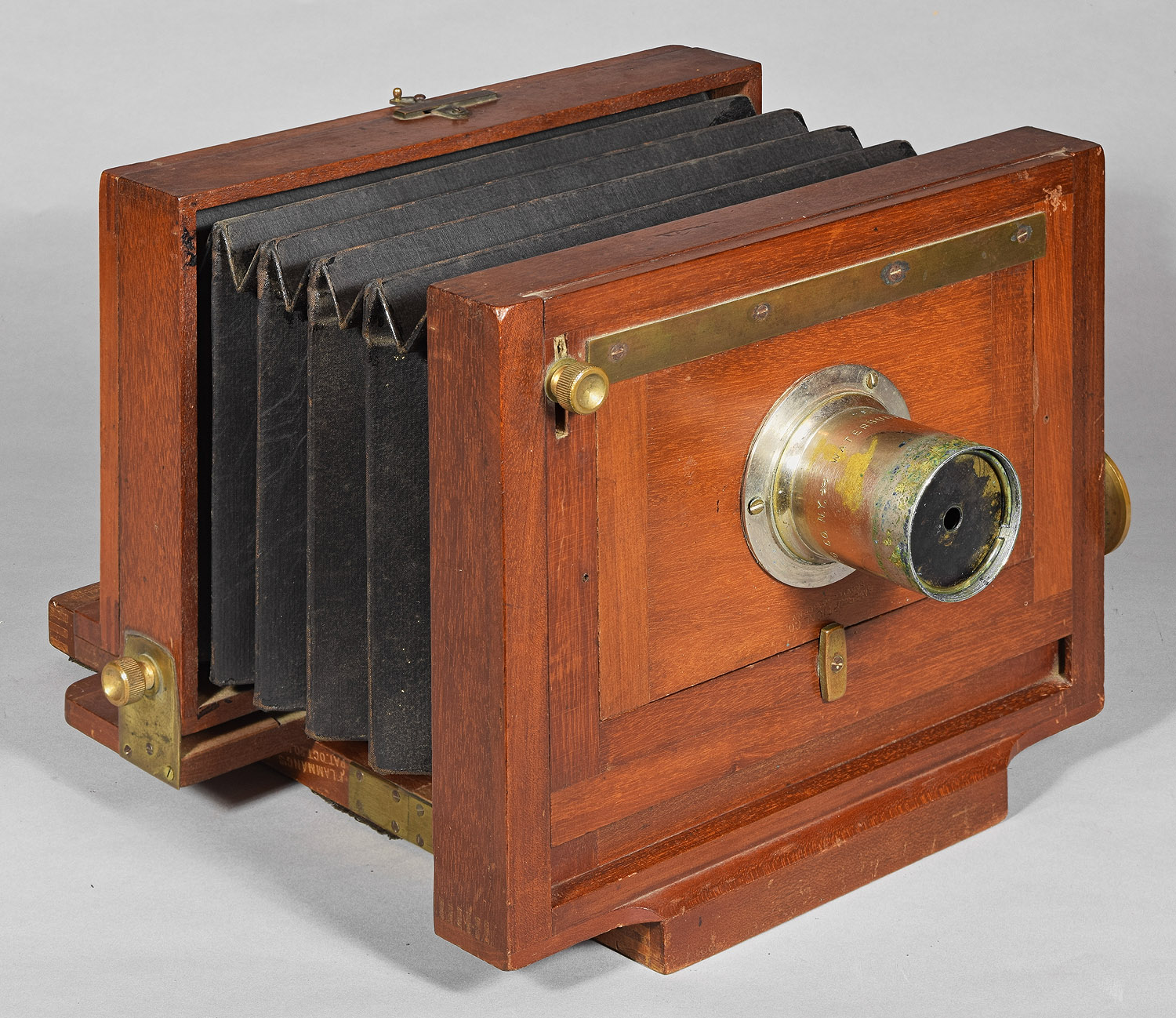

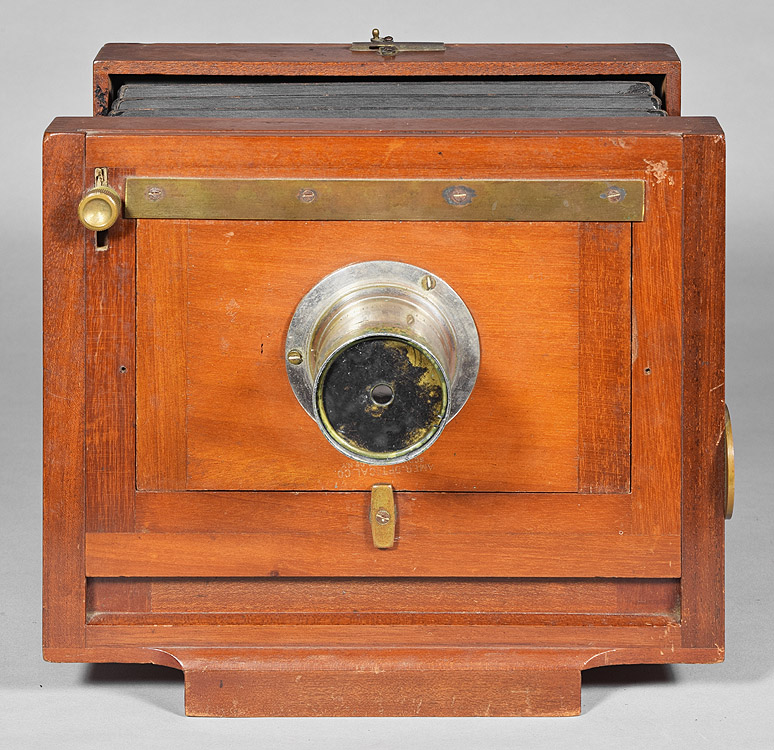
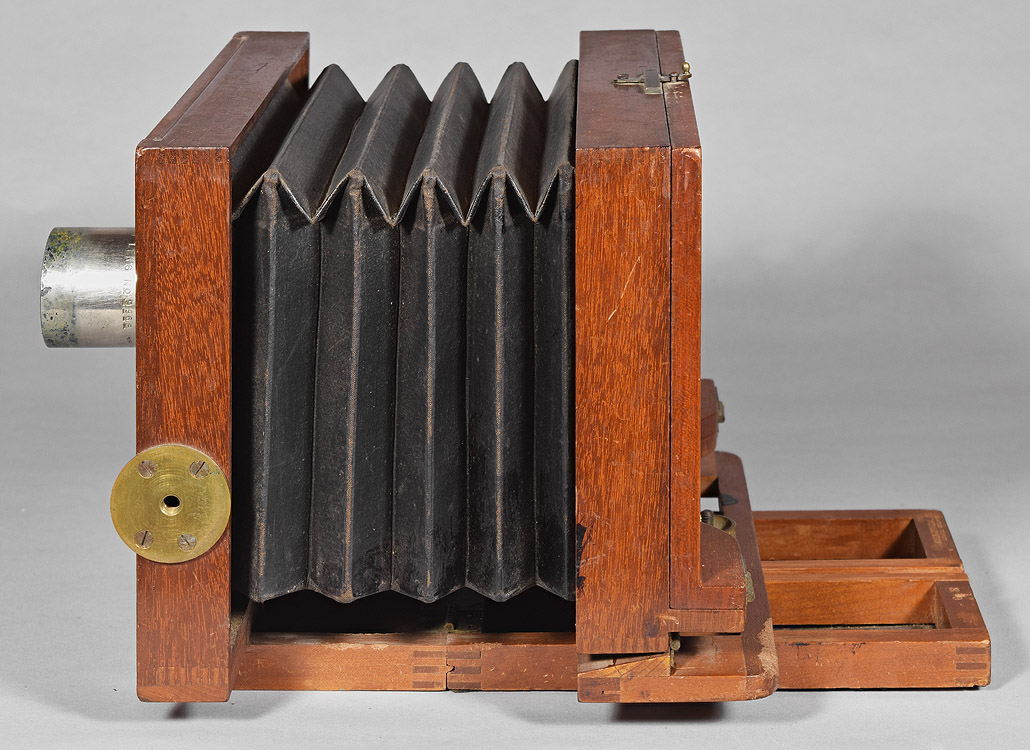
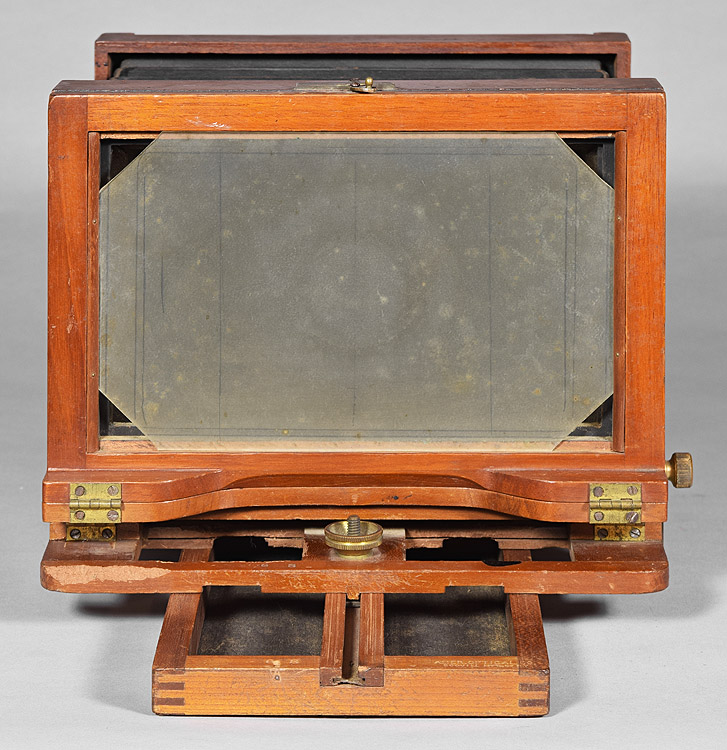
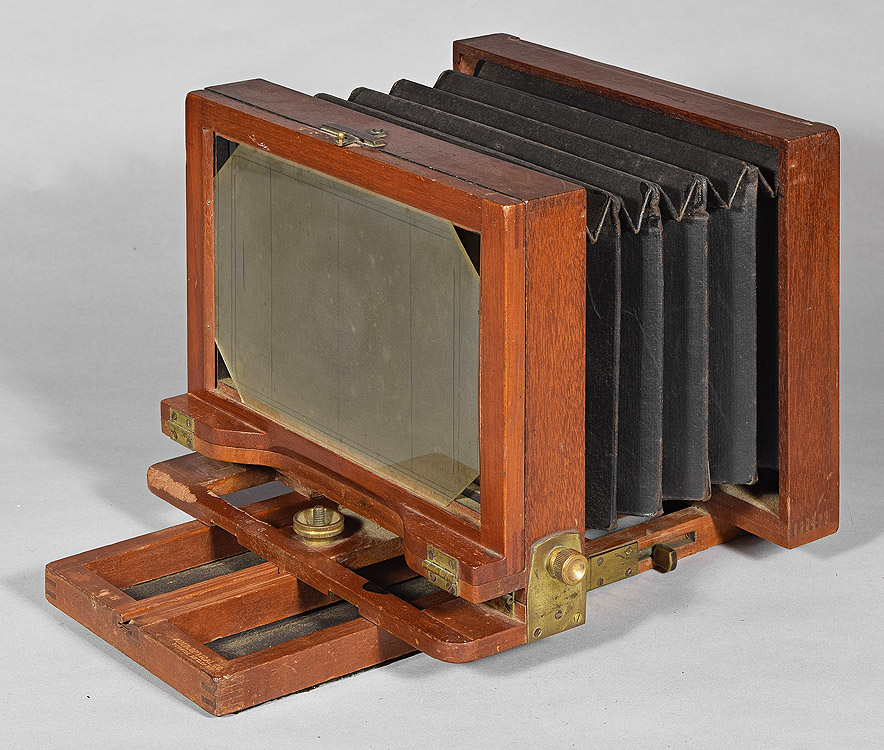

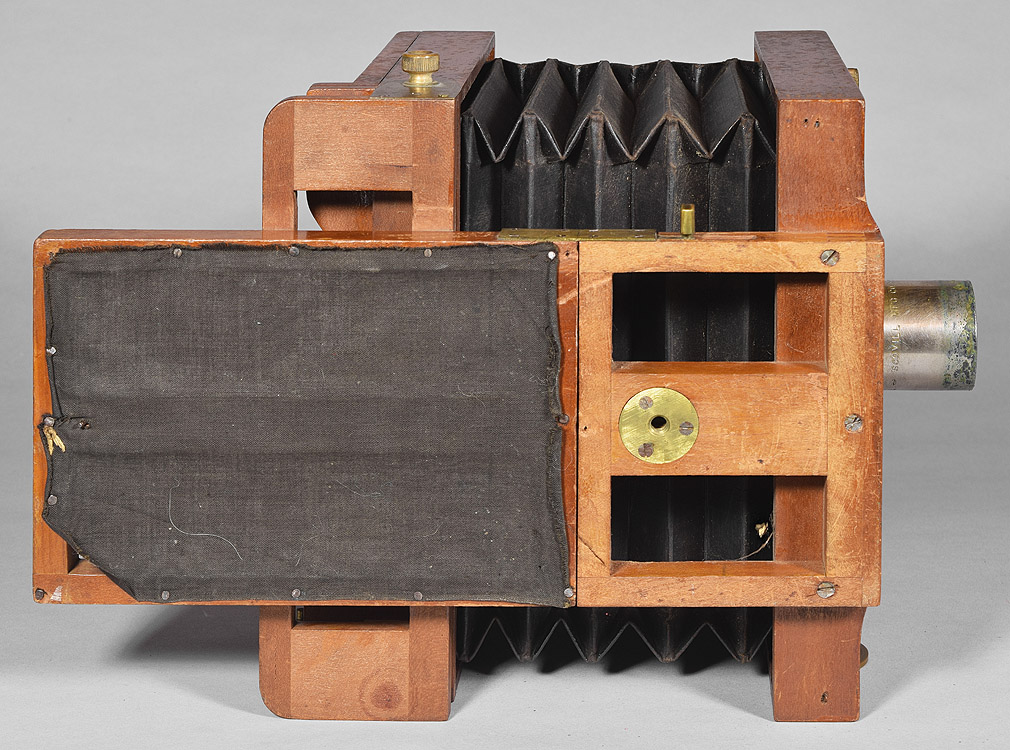
Stamp on lens board
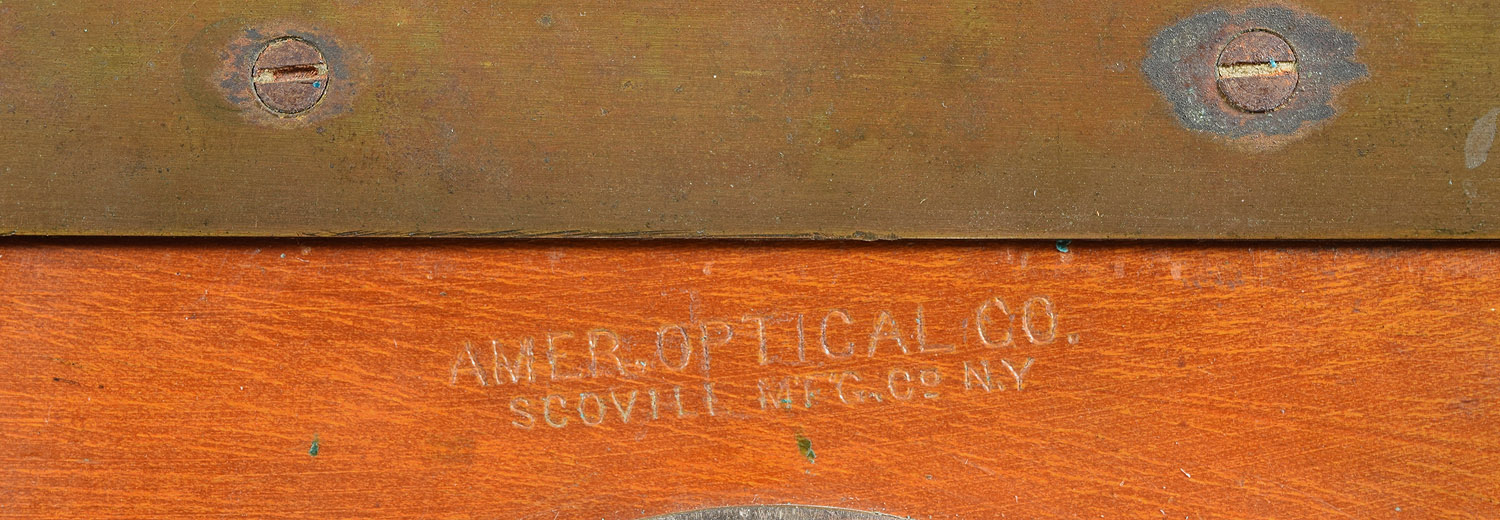
Stamps on rear rail

Stamp next to the rod and piston device

Comparison of American Optical
manufacture (left) to Scovill manufacture (right). Note the width
of the ground glass frames that make the American Optical version a much
bulkier camera.
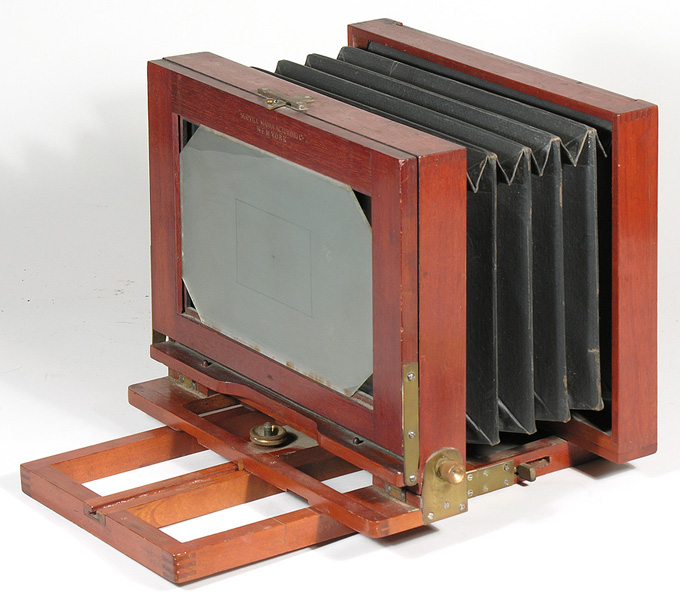

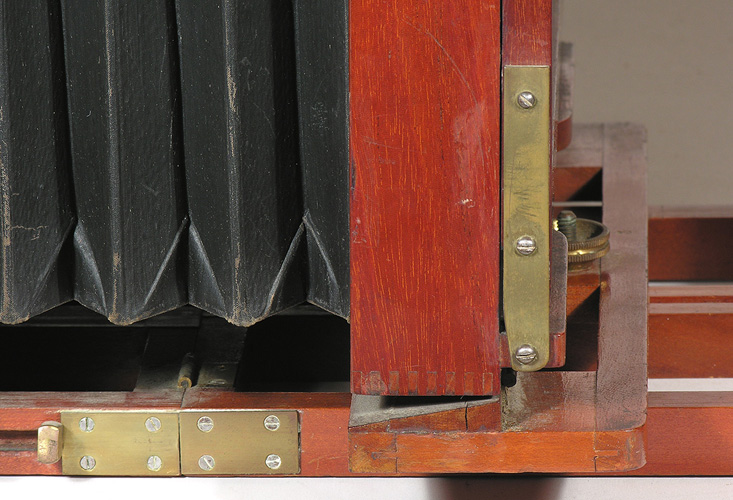
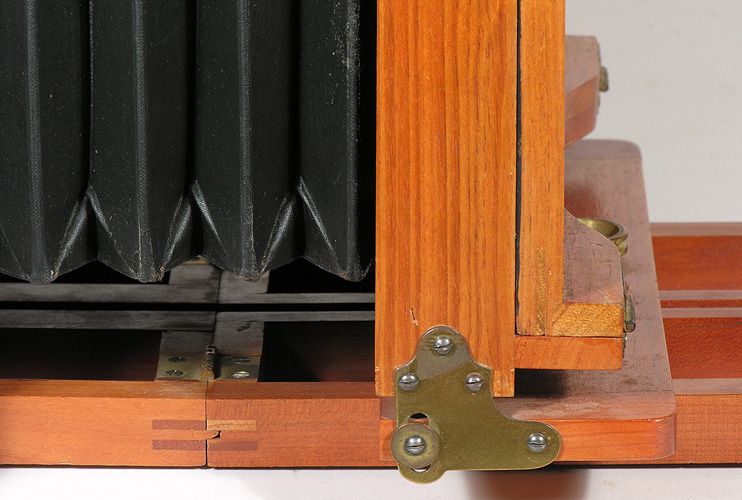
Back to American Optical Co. / Scovill Mfg. Co. (alphabetical)
